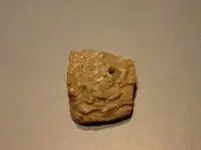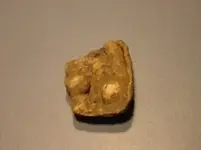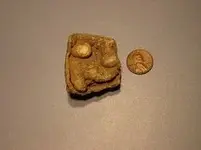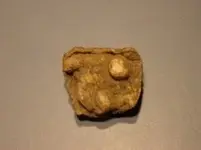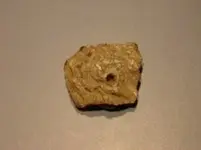Regarding Doranhashemi's guess:
The melted lead mass with some balls showing cannot be melted lead balls from inside a cannonball, because if they melted into a mass inside a cannonball, there's no way to get the mass out through the cannonball's approximately 1"-wide fuzehole.
There is another type of cannon ammo that contains lead antipersonnel balls. It is called Canister, aand it is basicly like shotgun buckshot ammo for cannons. The Canister was simply a tin can, filled with iron balls or .69-caliber lead balls. But here's why this melted lead mass cannot be from a Canister ammo that got thrown into a bonfire. If the lead balls were inside a Canister when they got melted, the lead mass would "take the shape of" the interior of the can. But the underside of this lead mass isn't slick-smooth like the inside of a tin can.
Instead, the lead mass's underside is rough & bumpy, like the lead was sitting on dirt when it melted. I've seen that "shape" on the bottom of melted lead that I've dug out of civil war camp firepits.
Also, a "mass" of melted lead from a firepit often (but not always) contains at least a few bits of charcoal/ash from the firewood. There seems to be no charcoal bits/ash in this melted lead mass.
Other than the above statements, all I can say is that I am mystified by this melted lead mass. If it was a bucnh of lead musketballs in a leather pouch or bag, I'm curious about why all but two of the balls melted absolutely completely away except for two that retain at least some of their sphericality on top of the rest of the lead. That doesn't make logical sense. I cannot explain it.




